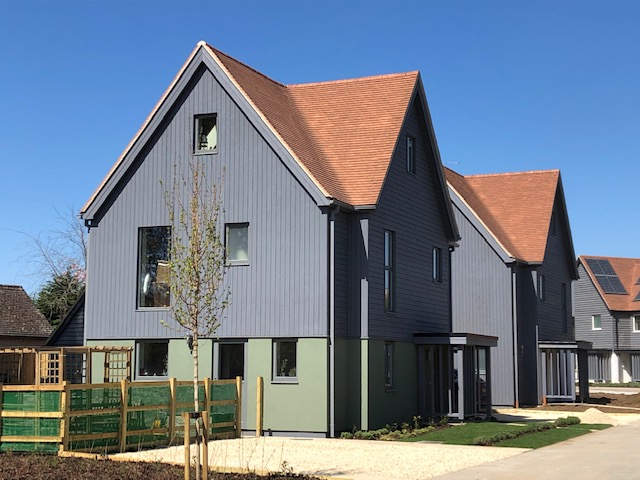Renovating historic buildings convinced Ian Pritchett of two fundamental truths about the future of his industry. The natural materials used in the past are more environmentally friendly than modern alternatives and climate change is a very real threat to humanity. It meant he could only see one way ahead for anyone in the construction industry with a conscience.

“Working on windmills and water-mills meant we had to study the weather and it didn’t take long to see it was changing,” he says.
“It was really clear that climate change was starting to have an impact and I wanted to do something about it. We were working with more natural, low carbon materials than are typically used in modern construction, so it seemed that was the answer.”
The results is Greencore Construction which has recently completed two developments in Oxfordshire villages – one of 15 houses in Longcot and 25 in Southmoor. Additionally, Pritchett reveals the business has plans ‘on paper’ to build 500 more over the next handful of years. Its developments are designed to be carbon zero throughout their lifetime.
This is achieved by building with more environmentally friendly materials, such as timber, which have collected carbon while growing, rather than releasing it while being manufactured. All its houses are designed to be as heat efficient as possible and the company also sets out to minimise its impact on nature. Where possible, future plans will aim to integrate cycling paths in developments and ensure they are close to public transport to minimise car use.
Strong local government support
The company, based at the Culham Science Centre near Abingdon, was set up in Oxfordshire primarily because it is where Ian Pritchett lives. However, it is a fortuitous decision, he points out, because of local government support for green building.
“Oxfordshire is the first county where all the local councils are signed up to the One Planet Living principles of living in harmony with the natural world,” he says.
“So we have a lot of local support, the problem we have is a disconnect between local and national government where a commitment to build zero carbon housing by 2016 was dropped in 2015 after heavy lobbying from the big building firms.”
Pritchett reveals that this lack of support for binding targets is not the only problem. He believes planning policy, made at a national level, does not reflect local authorities’ desire to build carbon neutral housing. Hence, it can be time consuming to add solar panels to a house. There is also a suspicion that not all building businesses keep every promise made to protect wildlife and use more sustainable building materials, such as opting for wood, hemp and cellulose products above man-made equivalents.
From support into policy?
Given the strong local government support in Oxford and Oxfordshire for more environmentally friendly building, it is highly unlikely Greencore Construction would ever move away from the area. Pritchett points out the region also provides access to more than enough highly skilled builders and trades people.
The biggest changes he believes are necessary to encourage green building needs to happen at national level, although local authorities could set a shining example to others in the meantime.
“We enjoy local government support but my question to them would be why have they not decided to only work with builders offering zero carbon projects?” He asks.
“National government could also help. In the same way you don’t have to pay road tax for an electric car, they could slash the average £15,000 Community Infrastructure Levy builders have to pay for every house they construct, if it is a carbon zero project. Once the current stamp duty holiday is over, they could choose to extend it for carbon zero housing. These tax changes could make a substantial difference to green housing businesses.”
These suggestions tackle the two disconnects Pritchett sees at national and local level. Westminster, in his opinion needs to turn words into policy and actively encourage environmentally friendly construction. Similarly, local authorities could lead the way by turning pledges to work in harmony with nature into procurement policy when selecting companies for new building projects and renovations.
About this case study - Powering up for the Green Recovery: Oxfordshire's role in building a cleaner future
Advanced Oxford would like to thank all of the companies that participated in this project for their time and for providing us with images which illustrate their technology and work. This case study was written by Sean Hargrave, working with Advanced Oxford.



